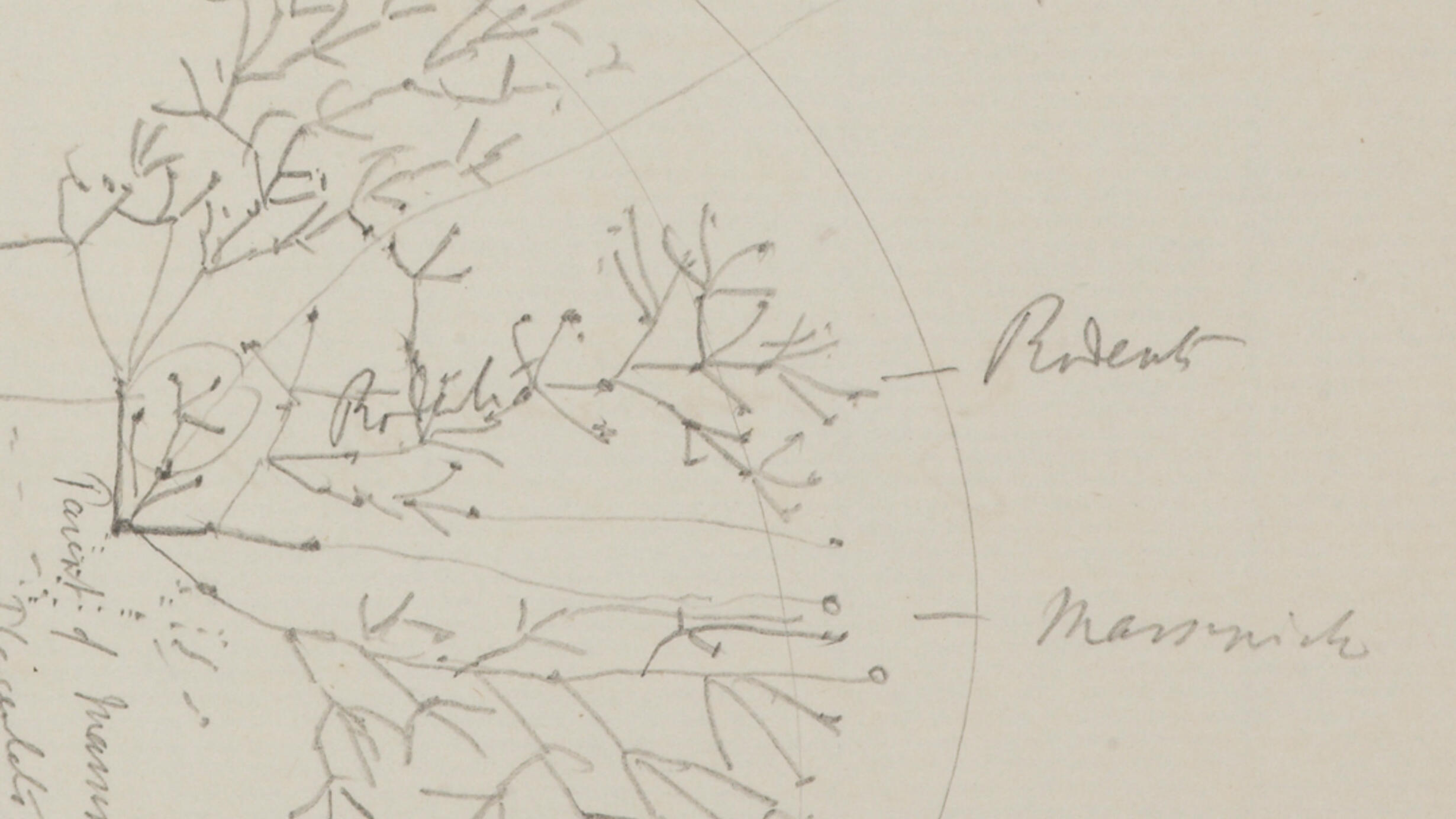Creating the Origin
 Branching Trees 1850's
Branching Trees 1850's CAMBRIDGE UNIVERSITY LIBRARY, DAR 205.5 183r
Voyage of H.M.S. Beagle - Chile-Atlantic February 1835 - 1836
Darwin’s work in creating On the Origin of Species encompassed much more than just setting pen to paper and writing the epochal book he published in 1859. The Origin was the mature fruit of a prolonged process of scientific exploration and creativity that began toward the end of the Beagle voyage with the first kindling of Darwin’s interest in evolution and that continued to develop through numerous stages.
London Years Spring 1837 - July 1842
In the late 1830s Darwin lived in London, first with his brother Erasmus and then with his bride Emma. There, after he came to entertain a belief in evolution, Darwin took the career defining decision fully to commit to the ‘species theory’. This commitment led him to undertake the grand-scale evaluation of the natural history evidence pro and con evolution, which he recorded in telegraphic notes and brief essays in his Transmutation Notebooks and his Metaphysical Notebooks. He also devoted himself to conceiving and framing a convincing explanation of evolution—or set of mechanisms. This search for a ‘theory by which to work’ went through several intermediate phases until he grasped and elaborated natural selection in 1838-1839, which completed the ‘notebook’ phase of the theory’s development. After a gap of some three years, creating the Origin entered its narrative phase as Darwin tried to write out his full theory—what he later called ‘one long argument’. This argument he would amplify and revise over a period of 17 years (1842-1858) in four successive versions: the unpublished 1842 Sketch, 1844 Essay, and the Origin ‘long version’ manuscript, now known as Natural Selection, and finally the published Origin.
Down House September 1842 - November 1859
But the 1844 Essay was written at Down House and the four canonical documents just listed are actually only part of the surviving documentation of Darwin’s species work, which also includes three different ‘experiment’ notebooks, and two sets of topical portfolios filled with some 4700 loose notes of varying length (Origin Portfolios I & II). Over this long period of drafting and revising a coherent narrative, Darwin both grappled with the best ways to express his far reaching concepts and sought to overcome many ‘difficulties on the theory’. At the same time, he also undertook a range of extended efforts to extract supporting information from the scientific literature and he framed or undertook empirical, even experimental, studies—some quite extensive and others tentative—likewise to support his developing ‘long argument’. All this thinking and writing was accompanied by much agonizing. On the one hand, the agony included his decision to defer publication in 1844, apparently in the wake of the hostile scientific reception of Robert Chambers’ Vestiges of Creation. On the other hand, there was his decision in 1858—following receipt of Alfred Russel Wallace’s paper—to accelerate his publishing timetable by considerably shortening the Natural Selection manuscript. In the end, Darwin was able to dash off his final draft, the ‘abstract’ that became Origin of Species, in just 16 months. Explore Creating the Origin scientific manuscripts.